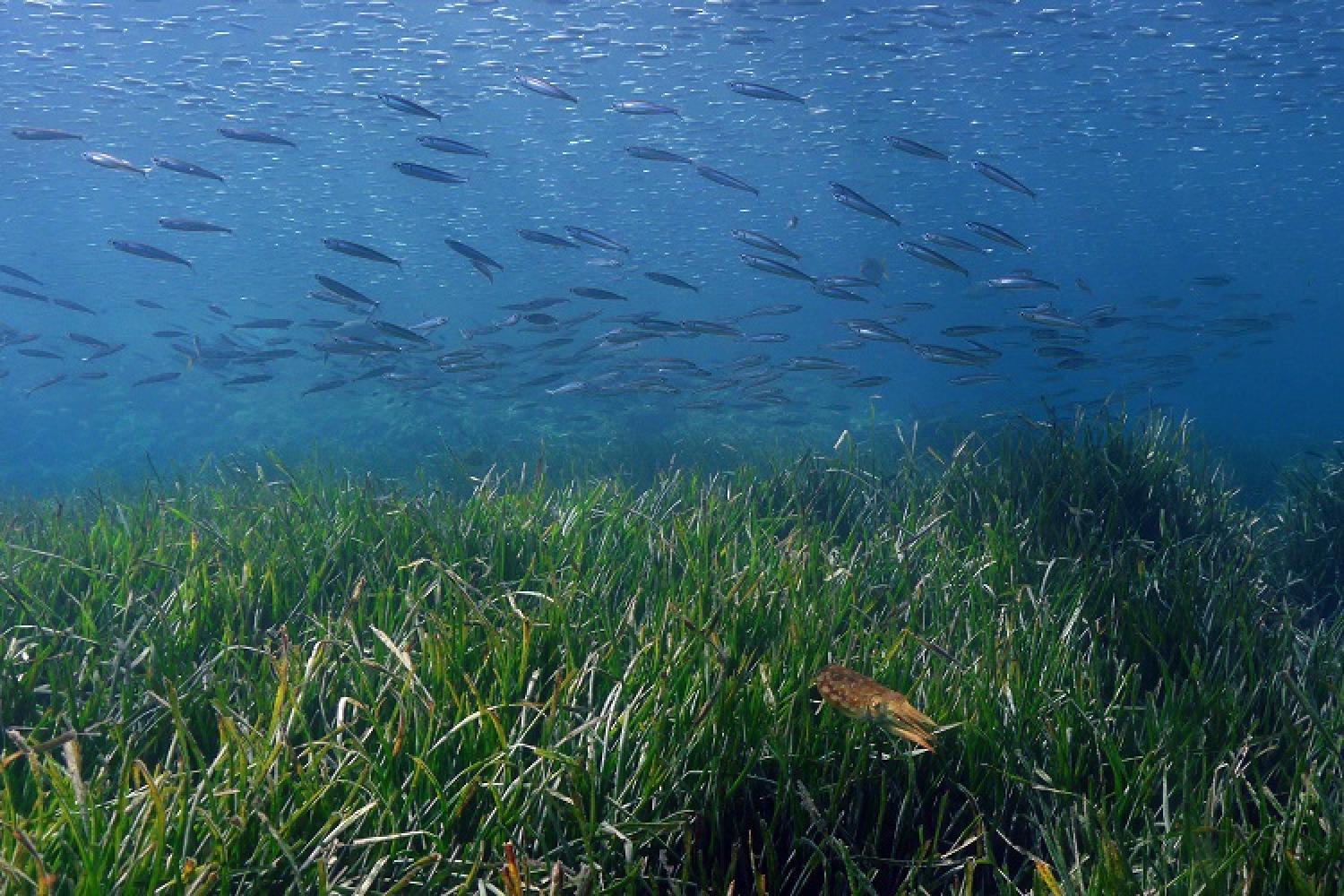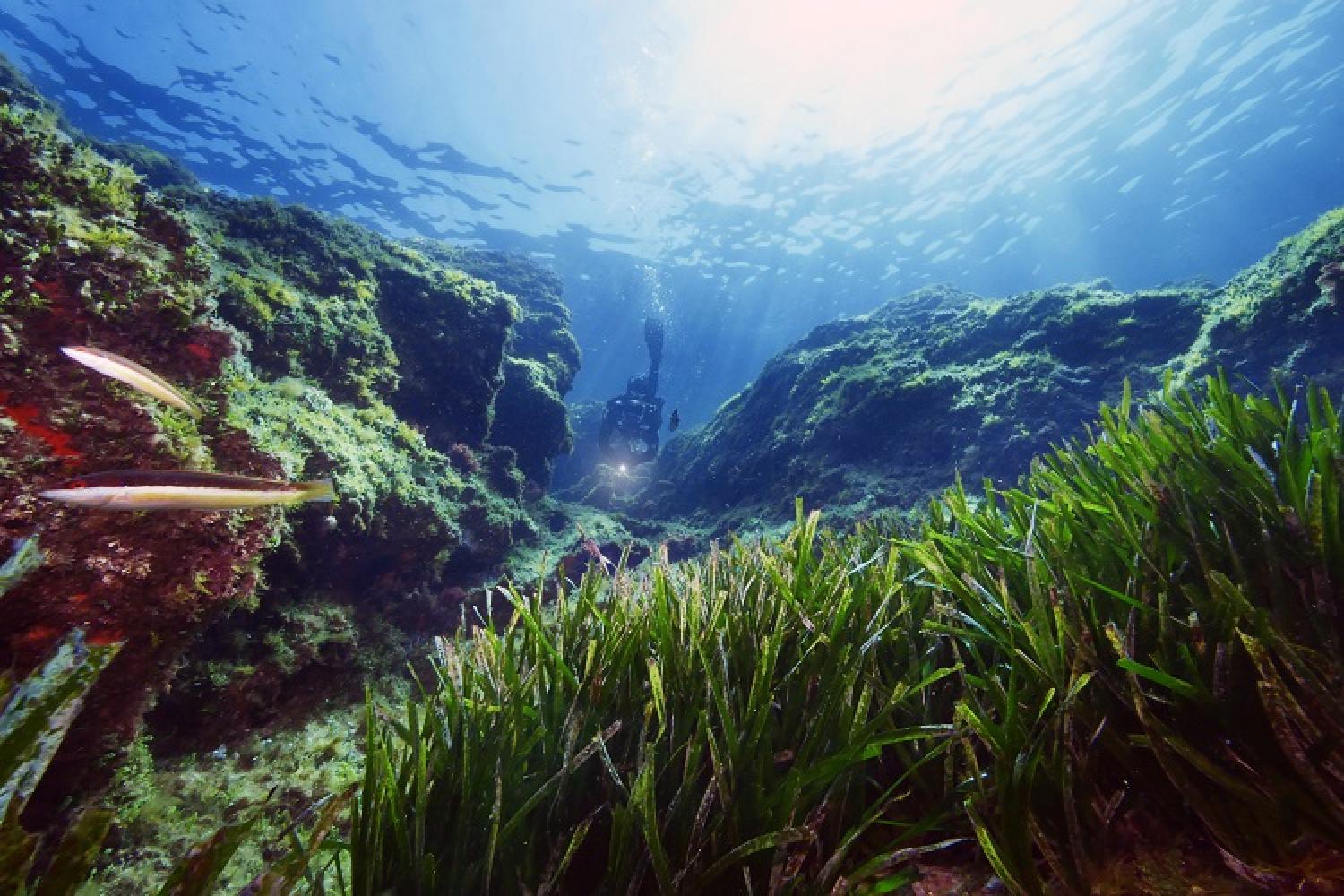Description
Comprised of Neptune grass (or Mediterranean tapeweed) , an aquatic plant that requires light to live, the meadows develop in shallow water and up to 40 meters deep, in places where they can absorb sunlight. They forms one of the most productive ecosystems on this planet, serving as nurseries, hideouts and food for a wealth of diverse flora and fauna. Their long leaves shelter more than 400 species of algae and thousands of animals (many fish and shellfish such as grazing fish, cow bream fish, sea urchins, crabs and predators, wrasse, Mediterranean rainbow wrasse, red mullet, shellfish, etc.). This tremendous dynamic environment attracts many species of great interest where they amass. The meadows also stabilise seabeds, constituting a hydrodynamic defensive system against waves and currents along the coastal fringe. In winter dead Neptune grass leaves accumulate on beaches forming “beds” that play a role as shock absorbers! Their ecological role is widely recognised and they are protected at a European level.
Did you know ?
Neptune grass meadows are the sea’s lungs: they can produce more oxygen per square meter than the Amazon forest!
Main associated species
- Neptune grass
- Long-snouted seahorse
- Short-snouted seahorse
- Fan mussel
- Mediterranean slipper lobster
- Juvenile fish
How can I help to protect it?
- I do not anchor near Neptune grass meadows
- I raise the anchor chain vertically using a buoy rope
- I avoid staying anchored in the event of strong winds in order to limit the chain pounding on the meadows






